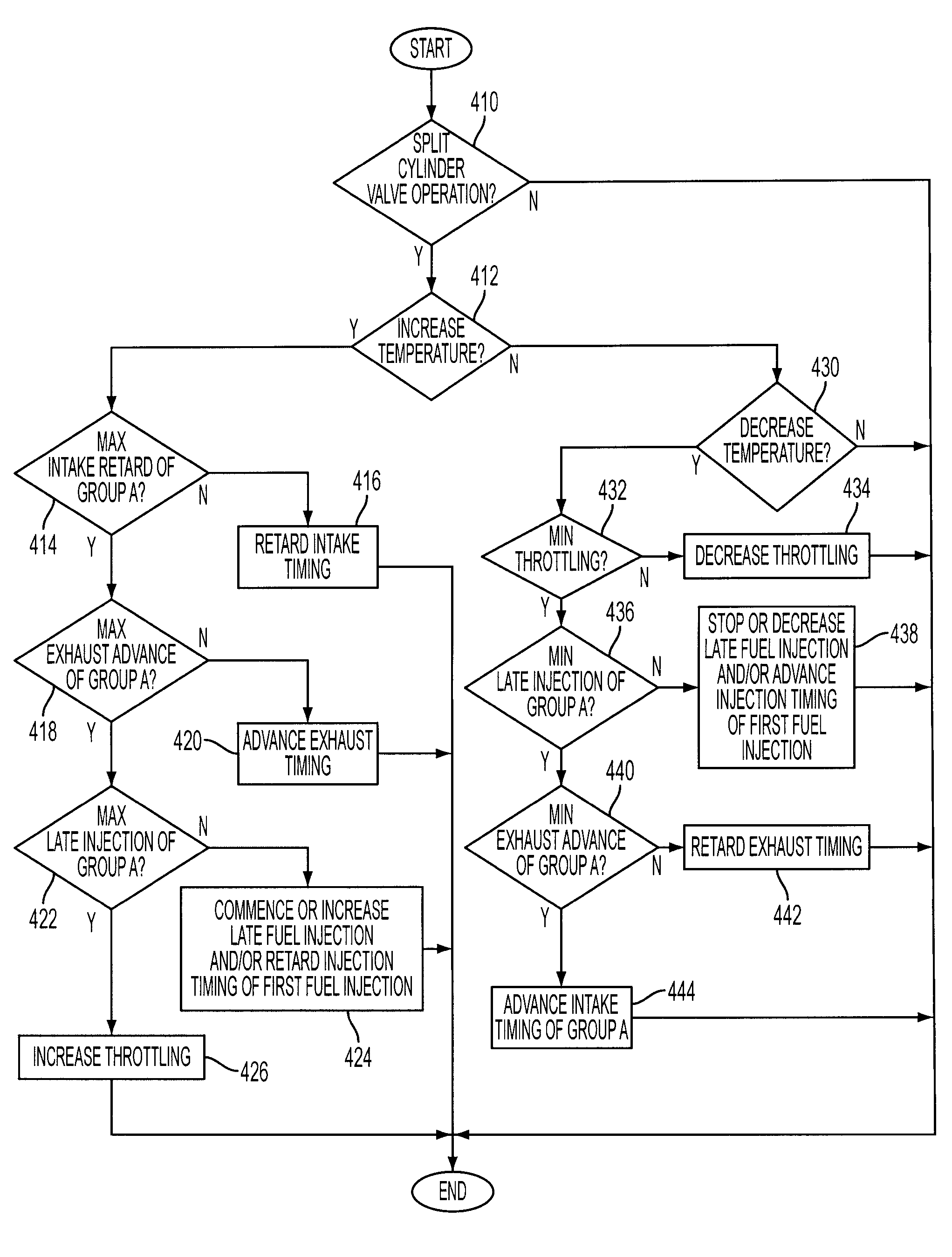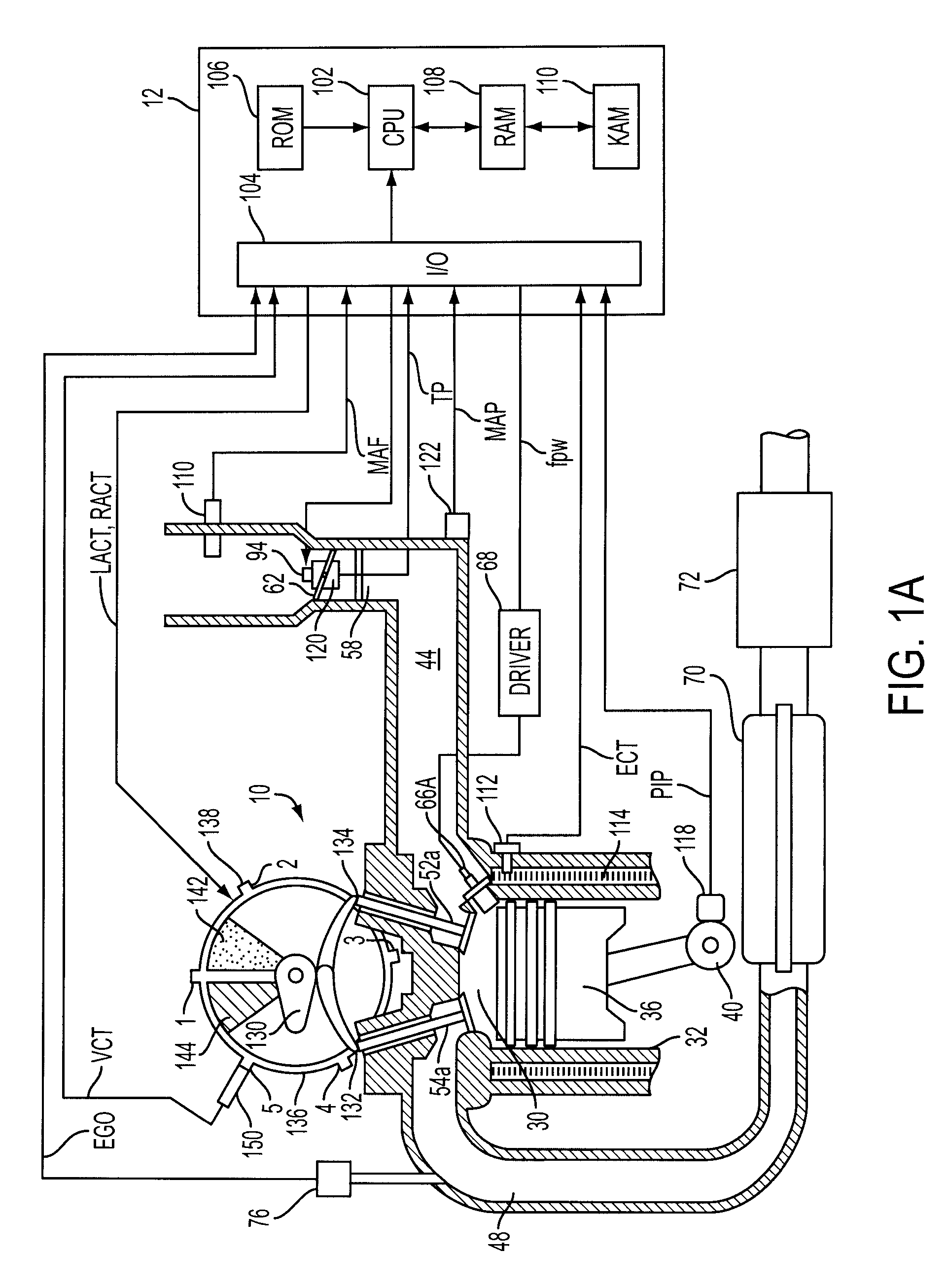Diesel engine with differential cylinder group operation
a technology of differential cylinders and diesel engines, which is applied in the direction of machines/engines, output power, electric control, etc., can solve the problems of low exhaust temperature, low heat generation efficiency, and device temperature sensitiveness, so as to increase heat, increase heat, and increase heat
- Summary
- Abstract
- Description
- Claims
- Application Information
AI Technical Summary
Benefits of technology
Problems solved by technology
Method used
Image
Examples
Embodiment Construction
[0010]FIG. 1 shows one cylinder of a multi-cylinder engine, as well as an intake and exhaust path connected to that cylinder. As described later herein with particular reference to FIG. 2, there are various configurations of the cylinders and exhaust system.
[0011]Continuing with FIG. 1, direct injection compression ignition internal combustion engine 10, comprising a plurality of combustion chambers, is controlled by electronic engine controller 12. The engine may be a diesel engine wherein compression ignition is initiated via direct injection of fuel, for example. Combustion chamber 30 of engine 10 is shown including combustion chamber walls 32 with piston 36 positioned therein and connected to crankshaft 40. A starter motor (not shown) is coupled to crankshaft 40 via a flywheel (not shown). Combustion chamber, or cylinder, 30 is shown communicating with intake manifold 44 and exhaust manifold 48 via respective intake valves 52a and 52b (not shown), and exhaust valves 54a and 54b ...
PUM
 Login to View More
Login to View More Abstract
Description
Claims
Application Information
 Login to View More
Login to View More - R&D
- Intellectual Property
- Life Sciences
- Materials
- Tech Scout
- Unparalleled Data Quality
- Higher Quality Content
- 60% Fewer Hallucinations
Browse by: Latest US Patents, China's latest patents, Technical Efficacy Thesaurus, Application Domain, Technology Topic, Popular Technical Reports.
© 2025 PatSnap. All rights reserved.Legal|Privacy policy|Modern Slavery Act Transparency Statement|Sitemap|About US| Contact US: help@patsnap.com



